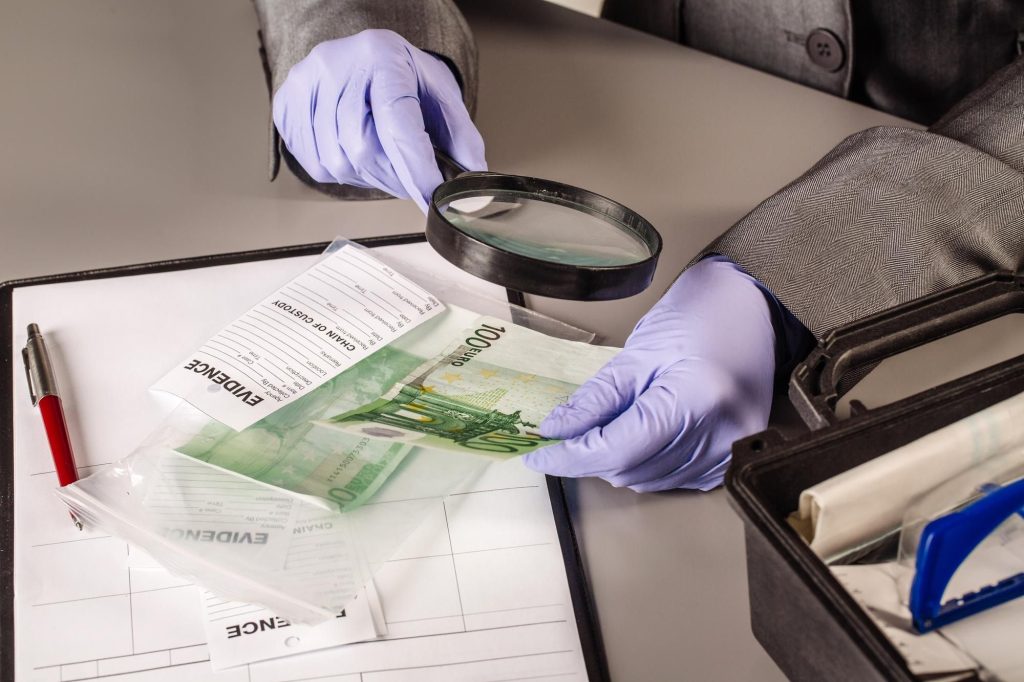Want to improve your skills in forensic science? Learn about the tools and techniques used to identify forgery and counterfeiting and how to use them effectively in your investigations.
Introduction

Forensic science is the scientific study of crime and its investigation. It involves the examination of physical evidence to help identify and solve crimes.
Forensic scientists use various techniques to gather information, including photography, fingerprinting, ballistics, hair analysis, and toxicology. They also use computers to analyze data and generate reports that can help prosecute criminals.
Forensic science has been used for centuries to solve crimes, but it has recently undergone a dramatic transformation thanks to technological advances. Thanks to this progress, forensic scientists can more quickly and easily identify evidence related to criminal activities. This makes their work much more effective in helping law enforcement officials bring justice to those responsible for crimes.
Case studies that illustrate How Forensic Science was used to Solve a Crime
Forensic science is used to solve crimes by identifying forgery and counterfeiting. This involves studying both the physical characteristics of the document (such as ink, paper texture, and handwriting) and its digital properties (such as file formats and metadata). By doing this, forensic experts can determine whether the document was created using legitimate methods or if it was altered in some way.
This information is often essential in determining who is responsible for forgery and counterfeiting crimes, as well as helping to identify any victims. For example, when police investigating counterfeit drugs find that their samples were being produced in China rather than Europe, they can use forensic science to help them identify which Chinese manufacturers are making the counterfeit drugs. In this way, forensic science provides critical insights into criminal investigations that would otherwise be impossible to obtain.
The Basics of Forgery and Counterfeiting

Forgery and counterfeiting are two forms of intellectual property crime. They involve the creation or imitation of physical products to deceive people into thinking they are buying something that is fake.
The process of forgery involves altering or removing elements from a document, picture, or another physical item to make it appear as if it has been created by someone else. Counterfeiting is the act of reproducing a physical product without the consent or authorization of the copyright owner.
Several different forensic techniques can be used to identify forgery and counterfeiting. Some of these techniques include:
- Document examination involves analyzing documents such as contracts, letters, and emails for inconsistencies and any signs of tampering.
- Forensic imaging – This is used to create digital images of items tampered with to detect alterations made to them.
- Analysis of chemical residues – This can determine whether an object has been printed on cotton paper using acid-free paper to prevent ink from fading over time.
- Currency analysis – This can help identify counterfeit notes by looking at their printing quality, materials used, and security features.
Tools and Techniques used in Forensic Science to identify Forgery and Counterfeiting
Forensic science is a field of study that uses scientific methods and techniques to investigate crime scenes, identify evidence, and solve crimes. One of the main tools used in forensic science is forensic handwriting analysis.
When it comes to forgery and counterfeiting, forensic handwriting analysis has several advantages over other methods. First of all, it’s highly accurate. This is because handwritten documents are often the only physical evidence left at a crime scene. And because they’re personal documents, forged or counterfeit documents can significantly impact the victim’s life.
Second, forensic handwriting analysis is fast and efficient. This is because it doesn’t require a large amount of sample material – just a single document written by the suspect(s). Third, it can be used to identify multiple authorship – which is an important feature when investigating forgery cases.
Lastly, forensic handwriting analysis can be used to identify different types of forgeries and counterfeits. This includes forged currency notes and counterfeit products like clothing and accessories.
Forensic science is a specialized field that uses scientific methods to solve crimes. It relies on detective work, laboratory analysis, and crime scene reconstruction. Forensic scientists play an essential role in many criminal investigations by helping to identify evidence, identify suspects, and determine the sequence of events that led to a crime.

